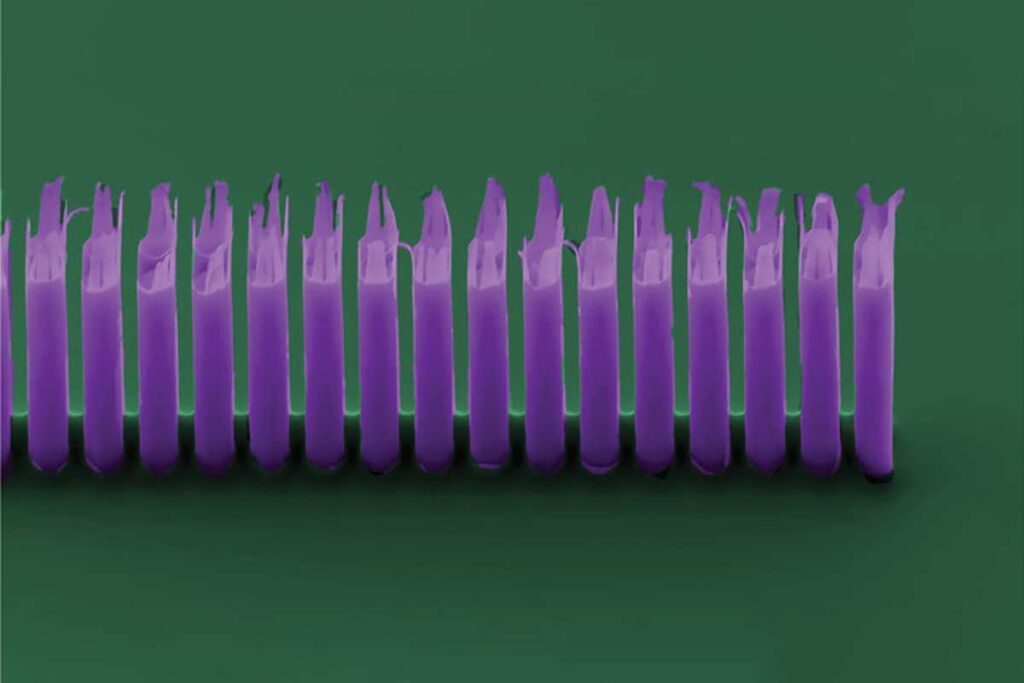A side view of the tiny particle accelerator
Tomáš Chlouba, Roy Shiloh, Stefanie Kraus, et al.
A particle accelerator just 0.2 millimetres long is the smallest device of its kind ever built. It is the first tiny accelerator that can produce fast and well-focused bunches of electrons, and could have medical applications. Eventually it could be made small enough to fit on the tip of a pen.
Particle accelerators, such as the Large Hadron Collider or those in medical facilities to treat cancer, speed up particles like electrons using electric fields and magnets. These electric fields are typically generated using radio waves, which have wavelengths measured in metres or centimetres. Peter Hommelhoff at the University of Erlangen-Nuremberg in Germany and his collaborators chose to accelerate particles using a different kind of electromagnetic wave – light – which has a much shorter wavelength measured in hundreds of nanometres. This allowed them to shrink the size of their accelerator from kilometres-wide to under a millimetre.
To make it, they used silicon shaped into thousands of 2-micrometre-tall pillars arranged into two parallel lines, each 0.2 millimetres long. To run the accelerator, the researchers shone laser light on this pillar-lined “runway” from above while injecting electrons into it from the side. The light waves from the laser interacted with the pillars to create an electromagnetic field that made the electrons clump together in narrow bunches. These particle clusters accelerated through the structure at speeds of over a hundred thousand kilometres per second.
The team experimented with adding more pillars to the runway. When they built a 0.5-millimetre-long version, they found that they could accelerate the electrons at even greater rates, increasing the energy they carried by 43 per cent. This indicates the accelerator is scalable, and can be made more powerful while remaining small enough to be integrated on chips, or even directly on the end of an optical fibre, says Hommelhoff.
Pietro Musumeci at the University of California, Los Angeles says some tiny accelerators have been built before, but this is the first such device that not only accelerates electrons, but also keeps them constrained in a relatively narrow beam that can be used in scientific experiments. “An accelerator is not just a scheme that gives energy to a particle; you also need to be able to transversely confine the particles,” he says.
At the moment, the new device only gives electrons about a millionth of the energy that they gain in larger accelerators. But Hommelhoff says there may be ways to boost each electron’s energy. He thinks making the pillars from a glass material called fused silica, which can withstand more intense laser light, could help.
Hommelhoff says scientists first proposed using light to shrink accelerators in the 1960s, but engineering challenges made it difficult to execute at the time.
“We think we can eventually shrink accelerators so that they will fit into the tip of a pen. Then, you can really think of new treatment tools for doctors or small-scale sterilisation tools for biology labs,” says Hommelhoff. “We think that we haven’t even yet conceived of all the possible [applications].”
Topics:


